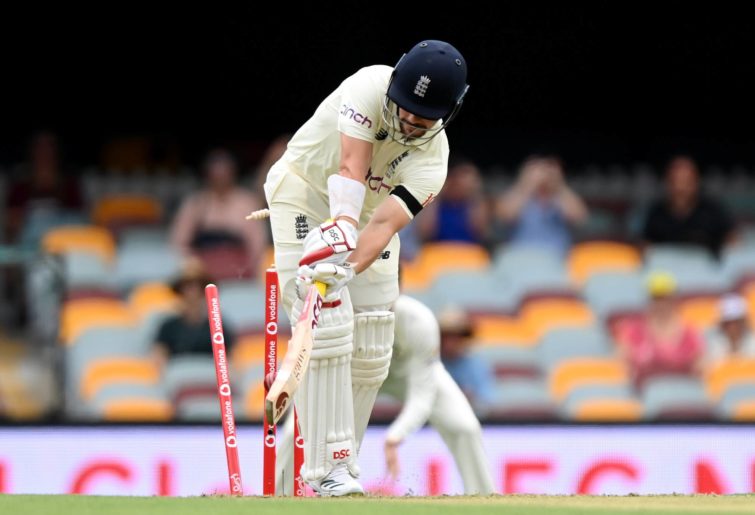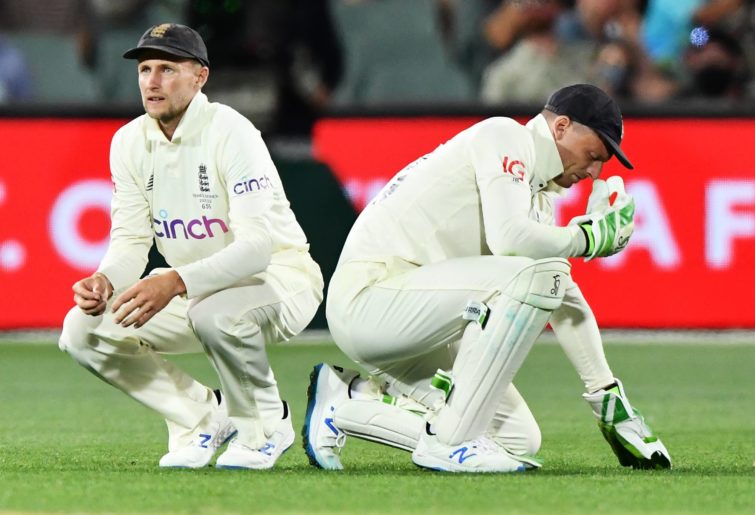In that classic way that England supporters seem to enjoy valiant losses more than actually winning, most of the plaudits after the second Test have gone to Jos Buttler, who batted for more than four hours to try and save the game.
To my eye, though, it was as much Chris Woakes’ innings that steadied the ship and allowed Buttler to settle in.
In two hours, the pair put on 61 off 190 balls, of which Woakes scored 44 from 97. When he was dismissed, his total for the series had moved to 105 – ahead of Rory Burns, Haseeb Hameed, Ollie Pope, Ben Stokes and Buttler. Only Joe Root and Dawid Malan have more.
There is a lot to like about Woakes’ batting. He has a gloriously simple technique. He stands still and he hits the ball with high elbows.
It isn’t perfect, but it is a simple technique for a simple approach to batting: the antithesis to Rory Burns, the piston-pumping steam engine of moving parts.

(Photo by Bradley Kanaris/Getty Images)
It has allowed him to hit 18 boundaries – only Dawid Malan with 25 has more. It is the same number as Joe Root, who has 70 more runs than Woakes.
It’s not hard to see why he continues to get picked.
His bowling rarely gets taken to (his economy rates home and away are almost identical), he is a reliable lower-order batsman (with ten first-class hundreds), he’s a good fielder and unlike many of his colleagues he seems to actually enjoy playing cricket.
Throw in a neat haircut, a polite manner and a boyish handsomeness and he is just so likeable. You can see why he remains a perennial favourite of his coaches.
There is, unfortunately, the small matter of the enormous gulf in the effectiveness of his bowling at home compared to away.
In the UK, he has taken 94 wickets at an average of 22.63. Away from the creature comforts of home (Dukes ball, Lord’s slope, softer wickets, the Barmy Army in full force), he has taken 28 at 54.28.
I admire his consistency, dedication and professionalism. He rarely lets anybody down. But, unfortunately for him, his selection is a neat case study of England’s muddled selection thinking.

(Photo by Cameron Spencer/Getty Images)
They continue to be obsessed with a player’s peripheral qualities and the idea of what they can bring extra to an XI, instead of whether their primary role is going to help win games.
It is a way of thinking haunted by not wanting to lose rather than wanting to win, and not working.
In England, when your choices of third or fourth seamer are all similar in being 135-kilometre-per-hour right-arm outswing bowlers, picking a player on the strength of his lower-order batting and fielding makes sense.
In Australia, picking a player who averages 55 there because he shores up the batting and is unlikely to get smashed is back-to-front.
When head coach and sole selector Chris Silverwood emerged from the shadows on Tuesday, he was adamant that his selections were not responsible for the loss.
“We picked the best attack for those conditions and you look at the attack we had out, there’s a lot of experience,” he said.
“I was happy with that attack this game and I was happy with that attack last game as well.”
‘Happy’ seems a rather unsavoury choice of words given how thoroughly England have been beaten so far.
Given his assistant, Jon Lewis, came out the day before to admit he felt they had got selections wrong so far, it seems there is as much confusion inside the England camp as there is in the media and public speculation about it.

(Photo by Mark Brake – CA/Cricket Australia via Getty Images)
What can England actually do to improve their fortunes with a few days to breathe?
After Rory Burns’ battling 30-odd in Adelaide, I would show him faith and emphasise the value of balls faced and not just the number of runs he scores, especially to his middle-order colleagues.
Haseeb Hameed has already shown he understands this. I would try Zak Crawley at six for Ollie Pope. Pope’s decision-making against pace is in tatters and his technique against Nathan Lyon is non-existent.
Crawley found runs harder to come by in the matches following his mammoth double century against Pakistan, but showed an unusually un-English penchant for the pull shot that may serve him well. He can hardly do worse.
Mark Wood must come into the side, as must as a spinner. Whoever is bowling better out of Dom Bess and Jack Leach should be picked, supported to bowl defensively if required, and stuck with for the rest of the series.
With Ollie Robinson quietly performing as the ship sinks around him, and Ben Stokes undroppable, that leaves room for just one of Jimmy Anderson and Stuart Broad.
I would base this decision on the wicket – if it is soft, Anderson gets the nod, but if it is a lifeless MCG drop-in, I would go with Broad.
It’s becoming easier and easier to criticise this England team, and as such less fun and less interesting.
They need to draw a line under the first two Tests and simply pick the best players they have in each position.
Ever the team man, Woakes may have to accept this doesn’t include him.































































































